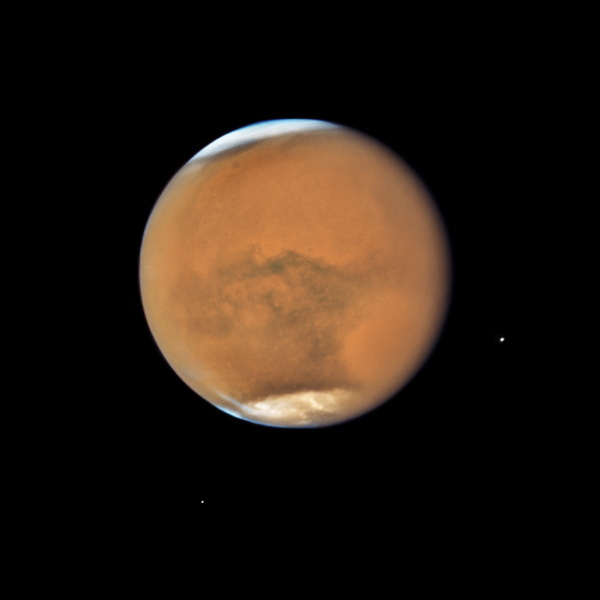
NASA is urging people to get outside and look to the sky Tuesday night, July 31 as Mars won’t be this close to our planet again for the next 269 years which is 2287 for those counting.
The Red Planet will come within 35.8 million miles from Earth, which might not seem like a “close approach,” but it will represent the closest approach since 2003’s mark of 34.6 million miles. The 2003 close approach was the closest Mars had been to Earth in about 60,000 years, according to the U.S. space agency.
For those wanting to check out the historic “close approach,” NASA says to get outside in the overnight or early morning hours and look for the brighter orange or red haze in the sky. The naked eye or a telescope should work just fine, and for those stuck under clouds the space agency has provided a live stream from the Griffith Observatory.
While Mars made its closest approach in the overnight and early morning hours of Monday night into Tuesday morning, NASA tweeted to “get outside TONIGHT” as the opportunity fades away.
The Red Planet rises in the southeast sky, and should become visible once it becomes dark enough about 90 minutes after sunset and 90 minutes before sunrise.
On Mars, the space agency notes the global dust storm that has nearly encapsulated the entire planet. The Hubble Space Telescope made an image of the Red Planet earlier this month when it was about 36.9 million miles from Earth as it approached its July 27 opposition.
“In summer 2018 the planets Mars and Saturn are, one after the other, in opposition to Earth,” the Hubble team reports in a news release. “During this event the planets are relatively close to Earth, allowing astronomers to observe them in greater detail.
“Hubble took advantage of this preferred configuration and imaged both planets to continue its long-standing observation of the outer planets in the Solar System.”w

